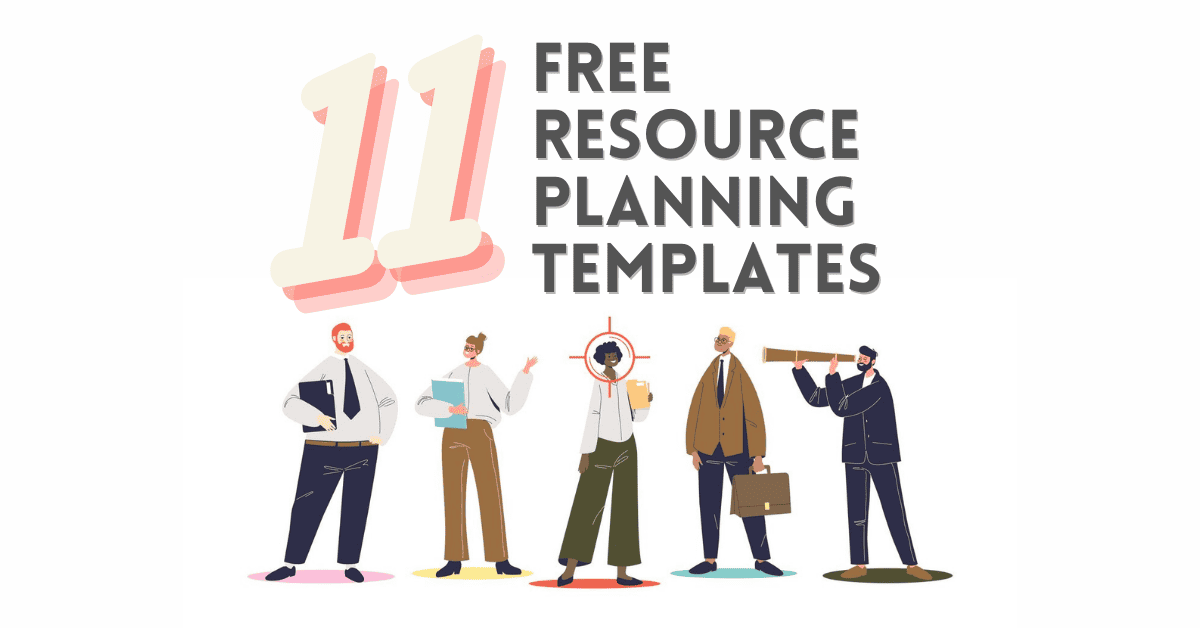
Resource planning templates help PMs get a head start on their planning. Using templates enables the PM to focus on a systematic resource plan to utilize a company’s resources better. A practical resource plan outlines a comprehensive agenda with information and assets required for any project.
In addition, it will have a sole operator for each task. The main types of resource plans are hypothetical and genuine resource plans. A hypothetical resource plan is determined by resource types without resource restrictions. On the contrary, a genuine resource plan is based on the accessibility of the actual resource.
Resource Capacity Planning
Resource planning is a systematic process project managers use to identify, forecast, and allocate various resources to optimize the company’s use of people and time. Business resources may be the workforce, assets, facilities, and equipment.
As a project manager, you must use various project management skills to create stability between projects, budgets, teams, and time. Resource planning indicates how well an enterprise is structured, as it helps them lead printable projects. Also, you might need one of the 21 Free Capacity Planning Templates.
First, it helps bridge the capacity gap. Demand forecasting is one of the pillars of resource planning, which compares resource demand against available capacity. Thus, it helps identify excess or shortages of resources. Managers can use the data to determine the right resource quantities to bridge the demand and capacity gap.
Additionally, resource planning helps identify risks and efficiencies that may delay project completion. Utilizing the tool will help you set more profitable rates and gain insights into your resource needs for future projects. Resource planning also enables project managers to review performances using forecasts and actual reports. Regular monitoring helps achieve client satisfaction and higher retention rates.
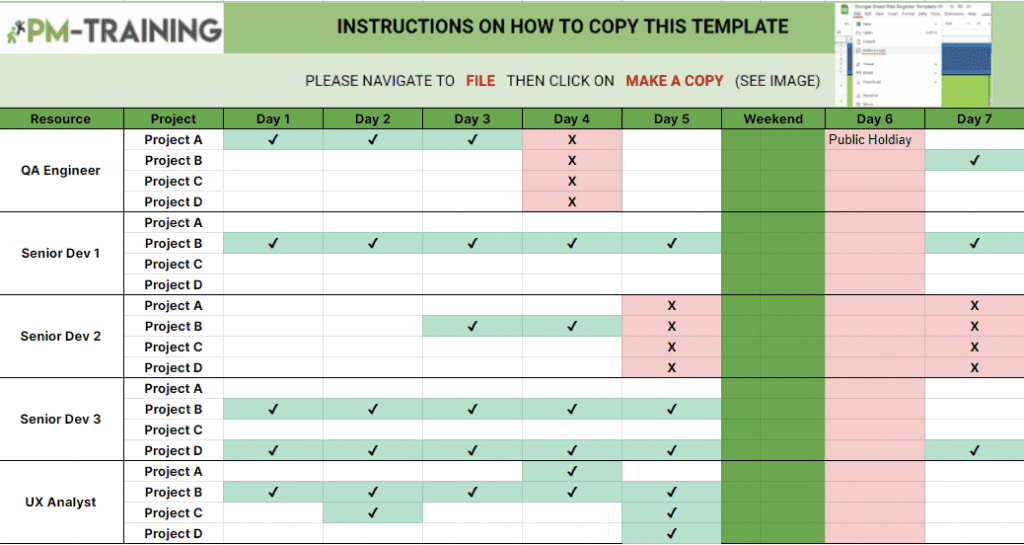
Project managers use Google Sheets or Excel, while others use a resource planning tool. An excellent resource plan will align your tasks, schedules (critical chain vs. critical path), and budget to ensure timely receipt of materials when needed. It can be beneficial for your pipeline projects. Though creating projects in the pipeline is incredible, you may experience quality issues, project bottlenecks, and missing deadlines if you lack adequate resources.
Effective resource capacity planning will help you predict all the necessary resources for the pipeline project. You can also implement agile resource planning to help combat the effects of inefficiencies in the forecasting process. Agile resource planning approaches projects with a broad vision rather than a single objective.
Understanding Resource Management
As aforementioned, resources help enterprises reach their goals. Resources can be physical or team resources. Resource management enables you to optimize and allocate resources to tasks that align with organizational goals.
Physical Resources
All businesses require resources, whether time, money, people, or suppliers. Physical resources are tangible things necessary for a business’s functioning. They include items that occupy space and are valuable to an organization’s operation.
Common physical resources include raw materials, technology like machinery, tools, equipment that employees use to execute projects, buildings and facilities, locations and specialized equipment, energy, and the budget you need to fund projects and supplies.
Physical resources are critical to all business types. Product-based organizations use physical resources to sell goods to customers and run the venture. On the other hand, service-based companies use physical resources to facilitate delivering exceptional services, like adequate space to work, high-technology tools to perform the task, and resources to support service delivery.
Physical resources management includes several steps:
- Planning the acquisition of the resources
- Obtaining the resources
- Ensuring the availability of resources
- Monitoring systems
Physical resource managers must assess the company to determine whether buying additional facilities will help the firm attain its goals. You must liaise with other managers and workers to know the lack of physical resources.
You will decide once you have analyzed the risks and benefits of acquiring and using the resources. Moreover, resource managers must ensure timely resource delivery to prevent project interference.
In the monitoring stage, managers assess the physical resource’s impact and devise corrective measures for future use. Resource management of tangible items helps minimize duplication and waste, streamlines and automates processes, and maximizes and speeds up output to enable the firm to respond effectively to consumer demands.
IT Resource Planning Templates
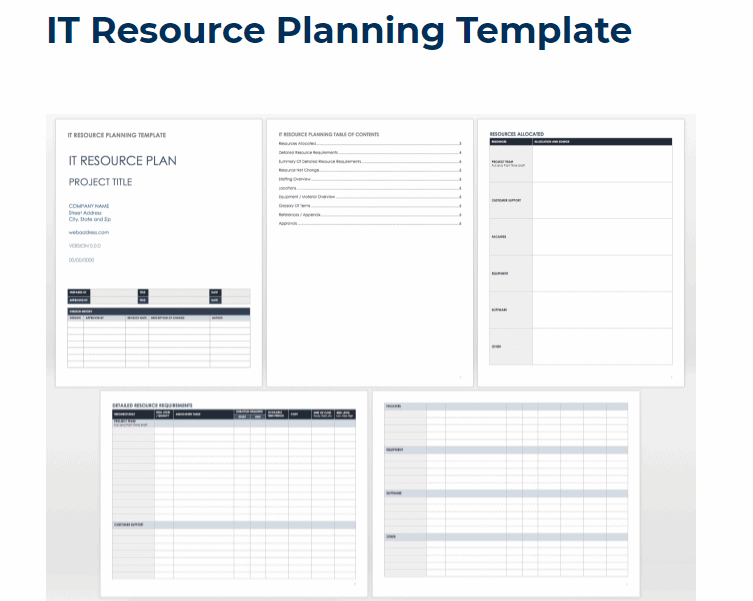
Free IT Resourcing Template by Smartsheet

Agile capacity planning template for Confluence
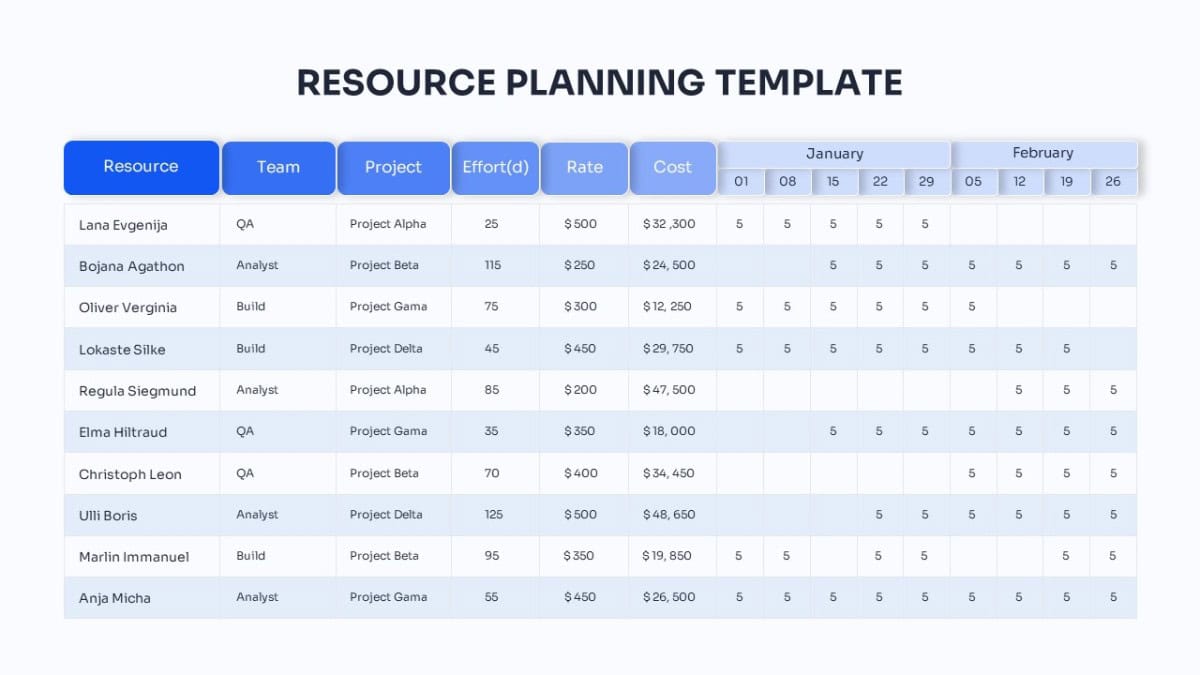
Team Resources
People resources are an essential part of any project. Team resources are not easy to manage, requiring additional resource management strategies. Resource management matrix like the RACI chart helps manage project resources.
However, measuring human resources’ efficiency using complex data is impossible. The data will only highlight resource utilization and availability but cannot increase productivity. As a human resource manager, you must have soft skills like communication and leadership to manage teams effectively.
You can make teams more productive by discussing and helping them resolve your concerns. Human resource managers need to clearly outline peoples’ expectations so that they understand their significance in the assigned tasks.
Ensure workers are involved in risk management by encouraging discussions and allowing them to set timelines based on their priorities. This will increase their commitment to the project and foster higher productivity.
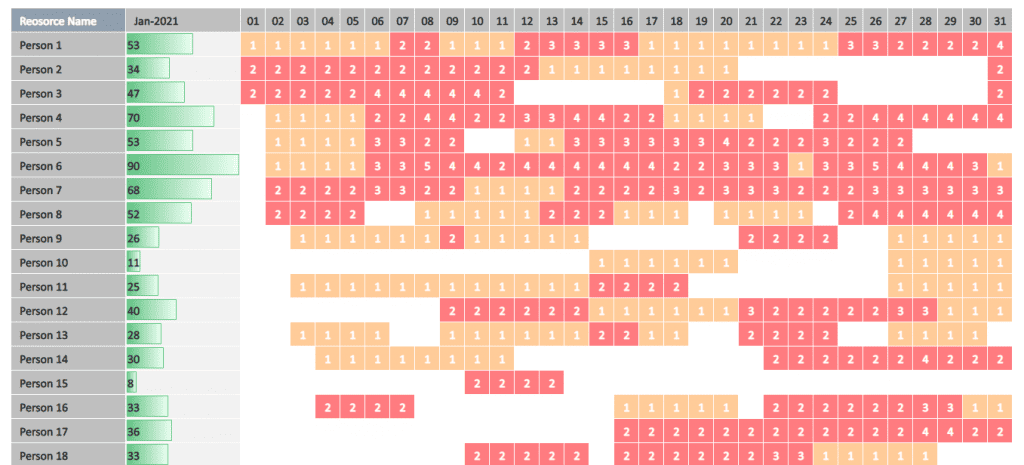
Furthermore, it would be best not to let your resources’ efforts go unrewarded. You must give resources, awards, and recognitions to make them feel important to the organization.
Additionally, it shows that you recognize their time and efforts in the assigned task, thus motivating them to do better. It would be best if you also promoted collaboration among teams. Collaboration brings all resources to a common understanding.
When team members are at the same level of understanding, they will work towards achieving a common goal. They will increase their creativity and productivity and minimize errors. Further, it would help to give them feedback on their performance to improve their confidence.
Resource Planning Spreadsheet Template
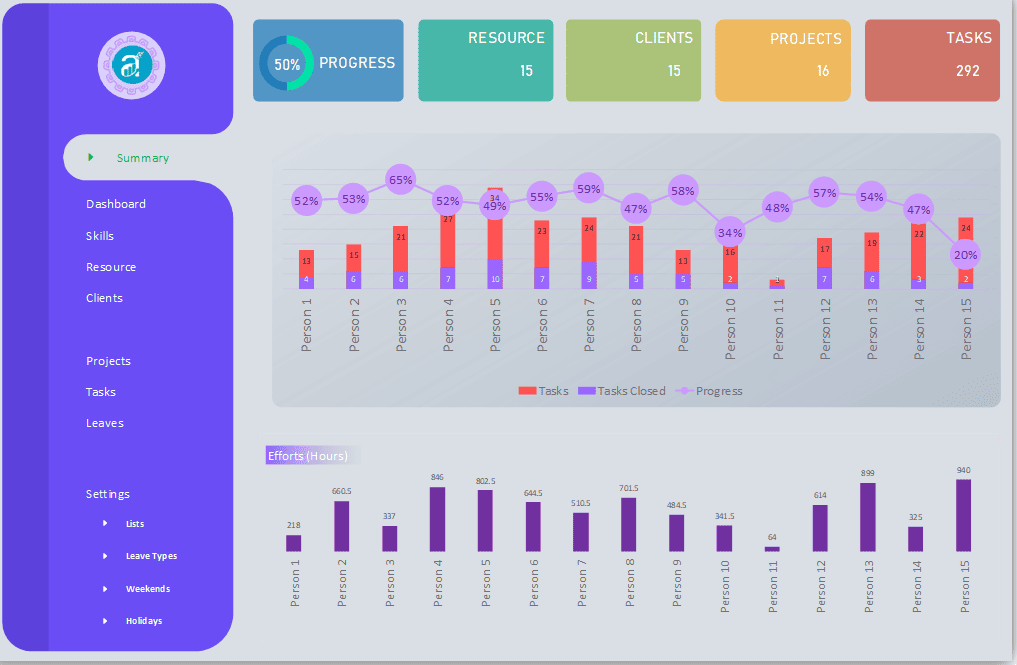
Considerations for Tailoring Project Resource Management
Tailoring is a critical element in the project resource management. The greater the level of resource management tailoring, the greater the chance of project success.
In addition, tailoring facilitates more team commitment and efficient use of resources. Here are some considerations for tailoring project resource management:
- Diversity: Individuals need to understand the diversity of business resources based on geographical location, experiences, capabilities, and skills. Understanding these elements will help them better utilize resources.
- Resources for specific industries: Different industries require different resources, so the dynamics keep changing. As a result, the resource management requirements will also vary in other sectors.
- Team management: As the project proceeds, you must manage, engage, and mentor team resources to ensure they complete tasks on time. Further, resource managers need to align project schedules with costs to avoid delays.
- Physical location: Another crucial consideration for tailoring project resource management. Resource managers need to know the physical location and the cultural background of resources to ensure efficient use.
- Team members acquisition: When you start a new project, you need to identify the right skills and define responsibilities for each team member. If you do not find a resource suitable for the project, you can train and induct the resource to the task.
- Life cycle approaches: Products have more extensive life cycles than those of a project. Projects bring changes to products and have a start and a completion date. Therefore, you must handle resources following a project’s start and end date.
Resources are indispensable project components that need proper management to increase the return on investment. If you do not manage business resources well, you will have costly budgets and delays that may cause project failures. Resource managers need to keep track of all resources to get better outcomes. In addition, they should implement tailoring management strategies when allocating resources to any project.
Here are some frequently asked questions on resource planning
How do you create a resource plan?
Creating a resource has several steps: determining the right resources, matching resources to tasks, budgeting time t each resource, scheduling resources, keeping an eye on project progress, and being ready to make adjustments.
What is a resource plan sample?
A resource plan sample is a tool in all your resources that helps align your project schedule and budget. They are easier to use and can be saved for future projects.
What is resource planning in project management?
It involves determining the right resources and the right quantities of resources for a project. Resource planning maximizes the use of resources for increased productivity.
Shane Drumm, holding certifications in PMP®, PMI-ACP®, CSM, and LPM, is the author behind numerous articles featured here. Hailing from County Cork, Ireland, his expertise lies in implementing Agile methodologies with geographically dispersed teams for software development projects. In his leisure, he dedicates time to web development and Ironman triathlon training. Find out more about Shane on shanedrumm.com and please reach out and connect with Shane on LinkedIn.